Companies today are rightfully fighting to acquire as many customers as possible.
You know what’s better than more customers, though? Better customers.
People that’ll stick with you forever. Folks that’ll hype you up without having to be asked. Ride-or-die fans.
These are your customer advocates.
And if you aren’t taking steps to support customer advocacy, you definitely should be.
That’s because building a long-term business should be a matter of quality (hint: not quantity) when it comes to customers.
Listen: we’ve seen firsthand how companies have stepped up their communication to build a more loyal base. In this guide, we’ll break down what customer advocacy is, why it matters, and how to create advocates:
- What is “customer advocacy?”
- The benefits of having customer advocates
- 8 actionable ways to get more customer advocates
🔑 What’s the key to building a customer-centric team? Grab our eBook to find out.
What is customer advocacy, anyway?
Let’s kick things off with a quick definition.
Customer advocacy represents any marketing or support initiative that focuses on the wants and needs of your audience. Advocacy involves not only figuring out how to better serve your customers but also putting them front-and-center as part of your business’s strategy.
The concept here is simple enough. By putting customers “first,” you encourage greater customer loyalty.
A customer advocate is someone who’s legitimately enthusiastic about your service. Advocates are the ones who write glowing reviews, talk you up via social media, and are happy to recommend you to others.
The more advocates your business has, the better. The end-game of customer advocacy is to both increase your customer’s lifetime value while retaining them for longer.
Keep in mind the distinction between a customer advocate and customer service advocate. The latter represents an internal role of someone who advocates on the behalf of your customers to managers and higher-ups. For smaller teams, your customer service reps can play this role themselves.
The big-picture benefits of creating customer advocates
Creating advocates means building legitimate, long-term relationships with your buyers to figure out how you can better serve them.
What is customer advocacy going to do for your business and bottom line, though? Fair question.
Consider that businesses today face crowded competition regardless of industry. By adopting a customer-centric strategy through advocacy, you give yourself a distinct competitive advantage. Below are some key benefits:
More positive word-of-mouth and referrals from your customers
Fact: a staggering 86% of people trust word-of-mouth reviews and recommendations.1
In a day and age where there’s so much noise online, buyers rightfully want to hear from actual people rather than listening to a marketing spin. This explains not only the popularity of third-party review sites but also why people seek out recommendations for products on social media.
A customer advocate “in the wild” can serve as both a cheerleader and promoter for your company. The fact that advocates hype up your business totally for free is an added bonus. Authentic, unfiltered praise is arguably the best marketing firepower you could ask for:
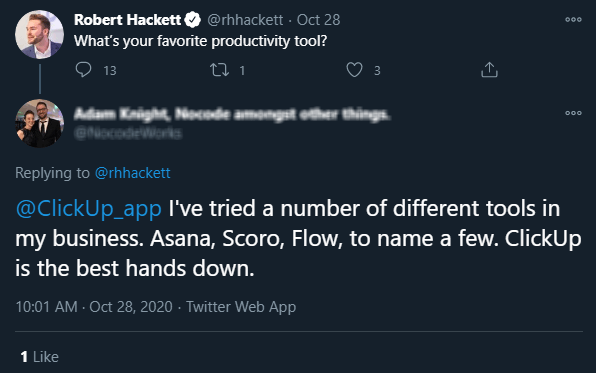
In terms of growing your business financially, advocates can help in that department as well. You don’t have to look hard to find businesses boasting affiliate or referral programs. Although this sort of advocacy is less organic, it can definitely encourage customers to spread the word.
If nothing else, advocates talking up your business can help shore up your online reputation.
You’d obviously rather have more positive reviews and sentiment floating around social media and the blogosphere versus negative comments, right? Advocates do the legwork of creating that positive feedback loop on your behalf.
Focusing on advocacy means better customer service by default
Advocacy is all about putting customers first.
Perhaps the most straightforward way to put customers first is by providing better customer service.
And by “better,” we mean faster, more comprehensive, and more personable.
Companies that take steps to improve their customer service tend to generate more revenue and longer-term customers. Consciously creating customer advocates goes hand in hand with these benefits as you explore opportunities to better serve your buyers.
Get a better sense of what all of your customers want, need, and expect
According to research we’ve done on customer experience statistics, three-quarters of customers say that they’re more likely to be loyal to companies that understand them.
Advocacy encourages your business to get to know your customers on a more granular, personal level.
Customer advocates don’t just pop up out of nowhere. They’re nurtured.
Although not every one of your buyers is going to buzz about your business, you should treat every customer as an opportunity to create an advocate. That means getting to know them and building more meaningful customer relationships.
8 actionable ways to get more customer advocates
If you feel like you’re lacking advocates, don’t panic.
Again, advocacy doesn’t happen by accident. Businesses can take proactive steps to both encourage advocacy and nurture relationships with customers that could become advocates in the future.
Below are eight strategies to support your customer advocacy efforts that are fair game for businesses of all sizes.
1. Create a criteria for your customer advocates and identify them
Pop quiz: what separates the average customer from a customer advocate?
If you’re not 100% sure, you need to come up with your own company-wide criteria. Keep in mind the definition of an advocate isn’t universal from business to business. Some sample criteria include:
- How long they’ve been a paying customer
- How much money they’ve spent with your business
- # of mentions via social media or positive reviews written
- Feedback provided to your service reps
- # of customers they’ve referred to your business
Once you’ve sorted out these details, you can more clearly identify outreach candidates for advocacy initiatives such as marketing pushes, testimonial-gathering, and advocate-specific promotions.
This is where a communications platform like RingCentral comes in handy. With RingCentral Engage Digital, you can log and consolidate your digital conversations with customers and tag VIPs across different platforms who match your criteria for an advocate:
Instead of losing track of your most valuable customers, you can identify and organize them within the same communications platform.
2. Pick your best customers’ brains with surveys and interviews
You can’t expect to create advocates without talking to your customers one-on-one.
From gathering success stories to better figuring out how you can serve them, asking the right questions can clue you in on where your advocacy efforts are winning or struggling. Here are some sample questions and conversation starters you can use via phone, survey, or email:
- “What do you like best about our product/service?”
- “How has your product helped you solve [customer pain point]?
- “What made you pick our service versus our competitors?”
- “Would you be willing to recommend our business or product to others?”
The most efficient way to gather this feedback is digitally, of course, but that doesn’t mean you can’t add a personal touch. Don’t neglect opportunities to get on a phone call with your customers, if you think they’d be receptive to it. This shows that you actually want to talk to them and can likewise allow you to dive into deeper details versus just short-form responses via text.
For example, RingCentral integrates with your email inbox make it a cinch to switch between emails and phone calls while going back-and-forth with customers. Want to move seamlessly from your inbox to the phone? No problem:
Additionally, RingCentral’s desktop and mobile app also lets you make video calls to get some much-needed face-to-face interaction with your customers:
This is particularly important in situations where in-person meetings just aren’t possible (think: your team is remote, there’s a global pandemic, etc). Video calls are a more personable avenue for gathering feedback, and empower you to share resources, customer data, and so on.
3. Keep track of all of your customer interactions to nurture advocates
Simply put, you need to consolidate all of your customer interactions to keep track of details such as the points we mentioned above. Now, if you have some kind of contact center solution, it should be able to do this for you. For example, you can see all interactions—across all channels—with RingCentral Engage Digital:
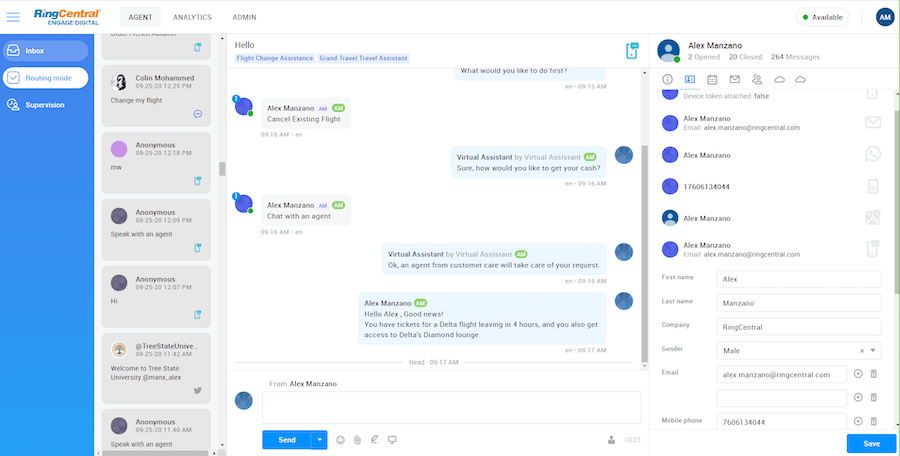
If you don’t have something like this, a CRM (customer relationship management) platform is an alternative you can look into. From conversations to transaction history, a CRM is a great customer service tool that serves as a one-stop-shop for keeping your customer details sorted. This includes your advocates.
If you want to know who your “best” customers are, look no further than your CRM. Tools like Zoho CRM allow you to input notes, track calls, and see any given customer’s history in one place. Rather than sifting through spreadsheets or endless email chains to identify your advocates, you can search and sort for folks easily in a CRM:
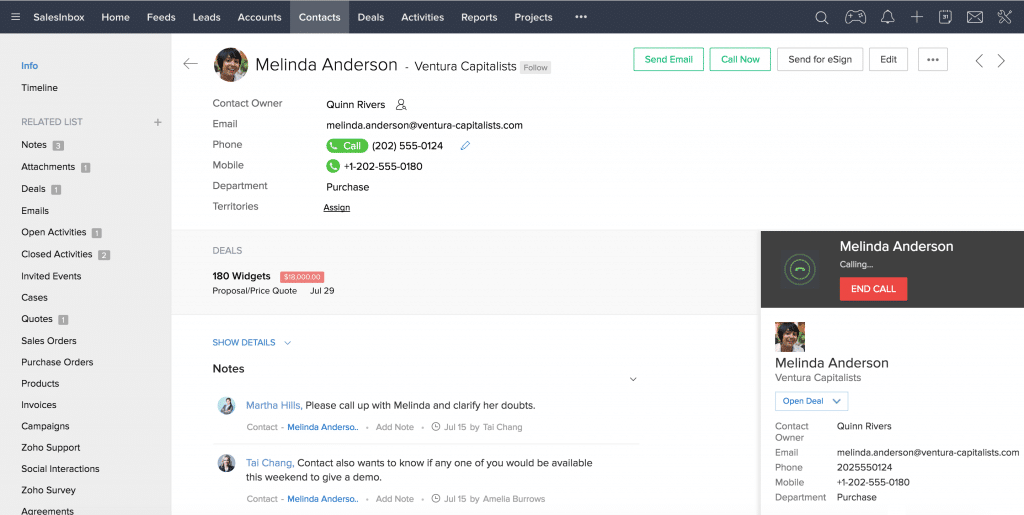
Additionally, using a CRM also makes it easier to reach out to these advocates without having to bounce between platforms. For example, you can log your customers’ social media handles, phone numbers, and email addresses alongside their profiles in your CRM. Using a tool like RingCentral, you can immediately dial out to them without missing a beat.
🕹️ Get a hands-on look at how RingCentral is designed to help your nurture customer advocates by booking a product tour:
💰 You can also use this calculator to see roughly how much your business could save by using RingCentral to support your team’s communication with each other—and clients.
4. Pay close attention to comments and questions on social media
As noted earlier, social media is a hotbed of product recommendations, customer conversations, and discussions about companies.
You need to listen carefully to these conversations and respond accordingly. Since feedback on social media is totally transparent, it’s a prime place to both discover advocates and source unfiltered feedback about your business.
Responding to your @mentions is a no-brainer, but it’s not the be-all, end-all of social media listening. For example, your company should also keep track of:
- Non-tagged mentions of your business (think: “RingCentral” vs “@RingCentral”)
- Keywords related to your business or industry (“Toronto law firm” or “email marketing tool”)
- Hashtags related to your business (“#emailmarketing”)
Tools like Twitter’s advanced search are helpful for honing in on these mentions if you don’t have a communications suite (like RingCentral) to track them for you:

You’d be surprised how many conversations relevant and related to your business fly under the radar. Whether it’s giving someone a helping hand or thanking them for a shout-out, responding to customers via social shows that you’re listening for feedback. More positive interactions with customers can help create a sense of loyalty.
5. Build a customer advocate program that ramps up referrals
Every customer advocate represents a distinct opportunity to build your business.
As such, creating a dedicated customer advocacy program (through affiliate partnerships or referrals) is a proven way to both spread the word and build revenue at the same time. These programs are a win-win for customers looking to get paid for recommending companies they already know and love.
Here’s an example of Mindbody’s customer advocate program for reference:
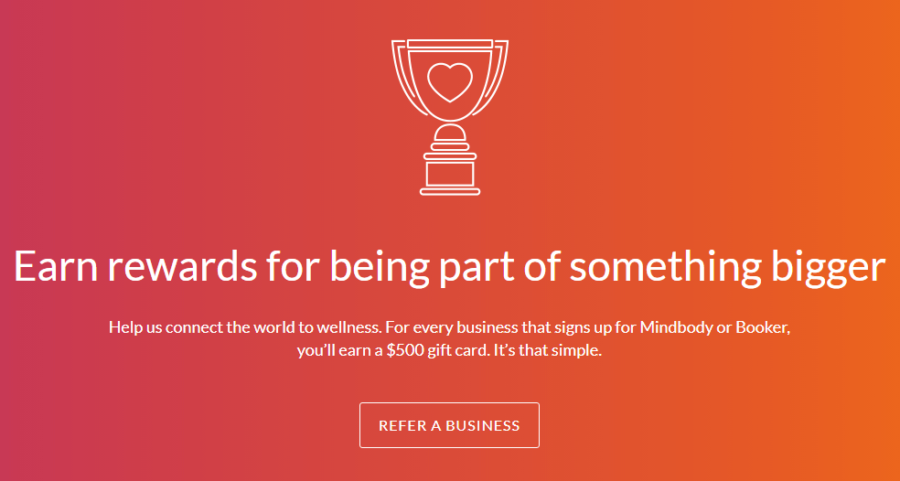
There are a few caveats to setting up a customer advocate program, though. For example, you need to decide what your incentives and rewards for customers are going to be. An affiliate percentage? A flat-rate bonus per referral? There is no “right” answer here but you have to obviously follow through on rewards for any referrals you get.
Also, you have to choose between an application-based or invite-only program. Letting people apply allows your program to grow faster, but also could attract freeloaders and people who are actually more interested in spamming affiliate codes rather than hyping up your business.
On the flip side, invite-only programs are more like a sort of inner-circle for your customer advocates. This ensures that your program is built around people who you can actually trust to promote your business in an authentic, non-spammy way. Invite-only promotional programs might result in fewer referrals, but they’ll likely result in higher-quality ones.
Although loyalty programs are often associated with retail and ecommerce, they’re growing more and more in the SaaS and tech spaces as well.
Ask yourself: what is the role of a customer advocate as part of your larger business plan? Do you want someone to just spread the word, drive sales, or a bit of both? With a loyalty program, you can do all of the above. You just have to be willing to put in the initial work and follow through on your incentives.
6. Make a conscious effort to speed up your customer response time
Based on our own experience helping businesses provide better customer service, response time is make-or-break.
If you’re speedy enough to get to customers first and exceed their expectations, they’re much more likely to fall in love with your business.
And speedy service is central to customer advocacy. Ghosting your clients or leaving them hanging is obviously a bad look. On the flip side, responding ASAP to them signals that you’re both listening and empathetic.
Beyond ramping up your service staff, the best way to speed up your response time to customers is consolidating your communications tools. For example, having to bounce between phone calls, email, and social media alone can be a total slog, which results in lag time between customer questions.
Customers today prefer vastly different support channels, so you can’t afford to ignore any of them. That said, juggling a bunch of support tickets is downright daunting.
The solution here is an omnichannel customer service tool like RingCentral. With our platform, you can see all of your in-app notifications side by side. This includes calls, social messages, emails, and more. Not having to move from platform to platform means speedier service by default.
7. Make your customer advocates part of your marketing strategy
Think of advocacy as a sort of two-way street.
If you want your customers to show you love, you shouldn’t be afraid to sing their praise and show your commitment to them. After all, people bounce to competitors and swift service providers all the time. By showing off your customers and success stories, you can do exactly that.
This speaks to the importance of gathering case studies and testimonials. For example, we’re thrilled to highlight our success stories and industry partners as social proof on our website:
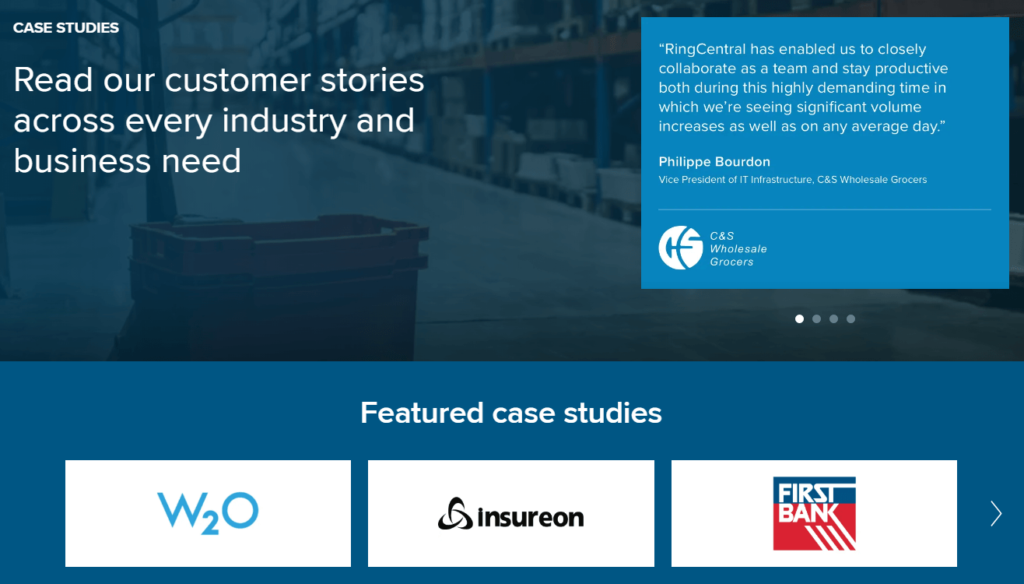
Even something as simple as a retweet or social shout-out can do the trick. Below is an example of user advocacy from Shopify, a company that’s great at highlighting customers who are succeeding with their platform:
8. When in doubt, check in with your customers more often
The common thread between all of these customer and client advocacy tips?
You need to talk to your customers. Failing to check-in or initiate those ever-so-important conversations means that you might be missing out on opportunities to create advocates.
Sure, it might be easier to wait for advocates to come to you.
But businesses today can’t afford to play the waiting game. You need to be proactive.
This is yet again where RingCentral can help. Its outbound communication platform allows you to quickly dial out to your customer list in quick succession to check in on how they’re doing:
This gives you an easy way to reach out to customers you might not have spoken to in weeks or months, while keeping relationships with your best customer advocates strong.
What are you doing to create customer advocates?
Customer advocacy matters.
For the sake of standing out from your competitors and building better relationships with your buyers, making a conscious effort to create more advocates should be high on the list of anyone doing business today.
Just remember to use the right tools to help you speed up and streamline the process of nurturing those advocates every step of the way.
1review42.com/word-of-mouth-marketing-statistics
Updated Mar 13, 2025















